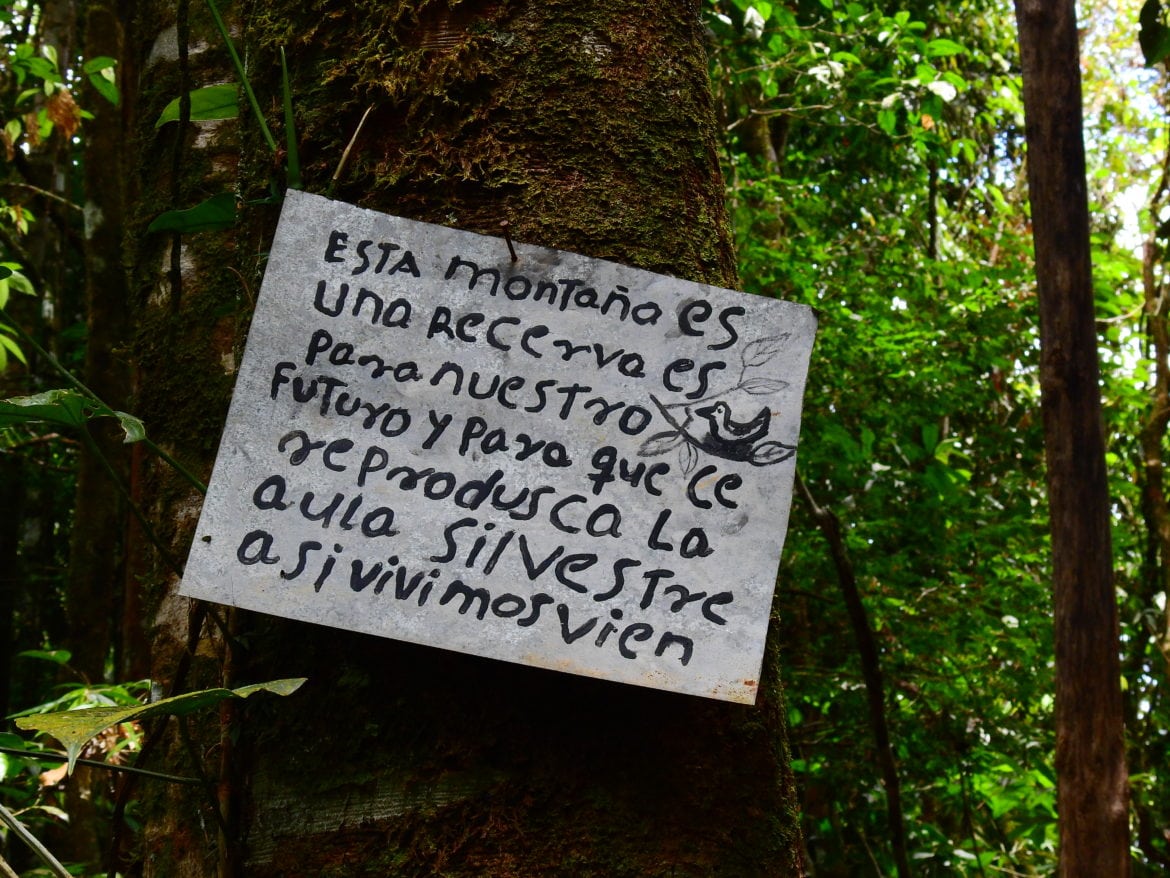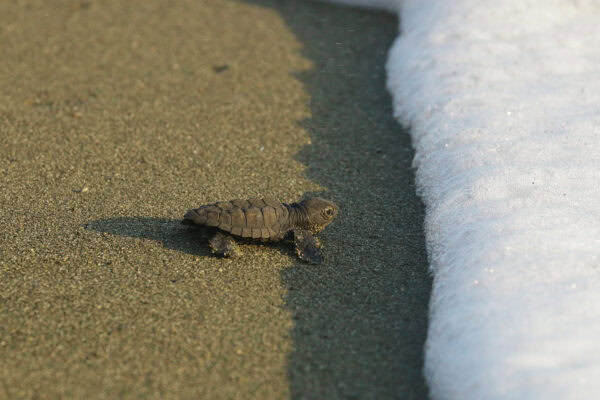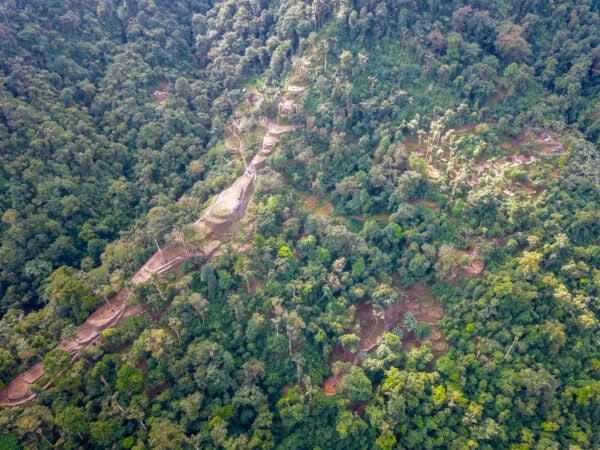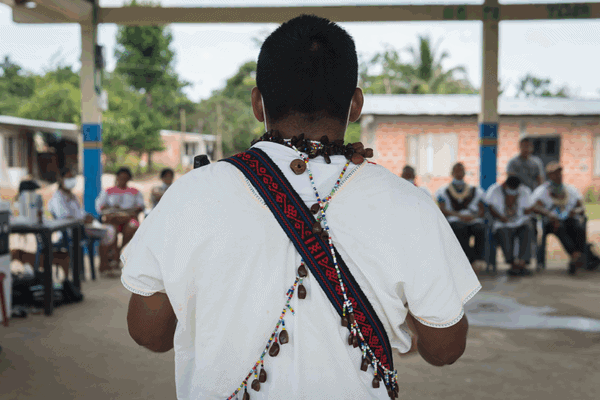The Amazon Conservation Team (ACT) and Colombia’s Universidad de la Amazonía continue their project “Live and Coexist”, through which they seek to defend carnivorous animals in Caquetá.

- Currently, the department of Caquetá has the highest deforestation rate in the Colombian Amazon.
- In this region, the jaguar (Panthera onca) and the puma (Puma concolor) were involved in 87 percent of the instances of human attacks and of carnivore hunting and depredation by local communities.
- The project seeks to enlist the campesino (peasant) communities of Caquetá in the defense not only of the jaguar, but also of hundreds of species that inhabit this department, which is the door to the Colombian Amazon.
The jaguar is part of the cultural and environmental identity of southern Colombia. This animal, the Inga people say, represents a sage. He is a teacher of nature, sacred to the community. But in some areas of Caquetá, the jaguar is considered a threat by the communities—a risk to their crops, their animals and their families.
Like the jaguar, dozens of “carnivores”, as they are known in the scientific world, run this same risk every day. Between hundreds of campesinos and the carnivores, a conflict exists, one which must be resolved with the use of force. To date, in this region, 87 percent of the instances of human attacks and carnivore hunting and predation by the communities have involved the jaguar (Panthera onca) and the puma (Puma concolor).
These animals, with which man had lived in harmony for generations, are in danger, as are the ecosystems where they live. For this reason, the Amazon Conservation Team and the Universidad de la Amazonía designed the project Live and Coexist: informational materials and fieldwork to encourage human-carnivore coexistence in the Fragua-Churumbelos corridor.
We have to go from the word conflict to the word coexistence, and we can only achieve that by explaining to the communities the importance of the jaguar and carnivores as species in their territory.
Juliette Pauline Chaux, ACT staff member in charge of monitoring this project
Chaux continues: “The objective is to go to the communities and build their awareness. It is to understand what is in the territory, why carnivores live there, what their migration is like, what other mammals we can find, and what animals of ecological importance coexist in the area.”
“In the department of Caquetá, carnivores play a very important role from the ecological point of view. They are in charge of the control of small and medium rodents, and in this way, they maintain the balance of the ecosystem. To the extent that we conserve these species, we also protect others that live with them. Taking care of them means protecting a different range of ecosystems, the Andean-Amazonian, which are also in the process of disappearing in the region due to the high rate of deforestation.”
Javier García, a professor and coordinator of the Research Seedbed on Amazonian Biodiversity and Agroecosystems (SIBIAMA) of the Universidad de la Amazonía
Especially in a context such as that of this region, where the history of Amazonian settlement has established elements of cultural isolation between local communities and dependence on their surroundings, this has generated a greater level of antagonism with the environment. Caquetá has the highest deforestation rate in the Colombian Amazon and a notorious hostility towards carnivores due to the economic losses that the conflict with these animals implies.
“We have realized that deforestation peaks are generally condensed in periods of less rain. That moment is when the campesinos take the opportunity to cut down trees for the establishment of extensive cattle ranching,” says García. “It is after these deforestations that we have seen an increase in attack events with these carnivores, when they reach those areas that are deforested. Deforestation causes a loss of habitat, and with that, the carnivores lose their natural prey.”
The project seeks to strengthen the response capacities of the communities in the face of carnivores in their territory, so that they have more tools to manage this conflict and, above all, prevent possible confrontations with these animals. This will be carried out through the distribution of informational materials such as videos, infographics and brochures that respond to the needs of the area.
“You have to explain to people that carnivores are an umbrella species. That means that if the jaguar, for example, is present in the territory, there are many other species that coexist there,” says Chaux. In that regard, it is a very important animal, because finding it there shows the quality of the ecosystem and the presence of bodies of water in optimal conditions.” It is for this reason that carnivores appear in areas where seeing them is unusual. When they lose food or water in their habitat, they go out in search of what they can find, altering their way of moving in the territory.
Currently, in the implementation of the project, ACT has provided technical assistance and resources to the Universidad de la Amazonía. “For five years, we have recorded all the attack, predation and hunting instances, through tracks and spoors, which has allowed us to understand the behavior of these animals,” explains García. “But having technological tools allows us to better analyze how this behavior has changed. The partnerships with ACT allows us to evolve and grow.” ACT donated equipment including 16 camera traps, 20 SD memory cards, a Garmin GPS, 50 pairs of AA batteries, and an external hard drive.
“Understanding the carnivore-human relationship as one of equals requires a long road, which we still have to travel. Now that we are beginning these awareness-raising processes, this project will begin to manifest with greater force, and we will be able to move forward in the future. This is a very important process, because we had to put ourselves in the shoes of the community. We used a scientific approach, but we had to put ourselves in the role of the reader. We have used a local, participatory approach, because the communities are the ones who know their territory, the ones who know what it is like, what is there. The key is that we learn from their knowledge, and they from ours,” says Chaux.
This project seeks to enlist the campesino communities of Caquetá in the defense not only of carnivores and the jaguar, but also of hundreds of species that inhabit this department, which is the door to the Colombian Amazon. A place whose stories, cultures and forests we protect.
“The agreement offers an opportunity for students of the region who have research and dissemination capacities, for the campesino communities, for our team, and ultimately for the defense of the environment,” concludes Chaux. “The technical capacities that exist in the universities required partners like us: today, we can imagine defending the carnivores, the jaguar and its wisdom, and the forests they inhabit.”
Share this post
Bring awareness to our projects and mission by sharing this post with your friends.





[…] For Indigenous peoples throughout the Amazon, the jaguar is more than a biological species—it is a spiritual force. Many communities regard the jaguar as a guardian of the forest, a being that connects the material and spiritual worlds. In oral traditions and ceremonies, the jaguar symbolizes power, transformation, and harmony with nature. […]